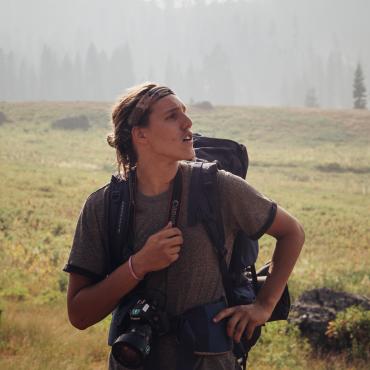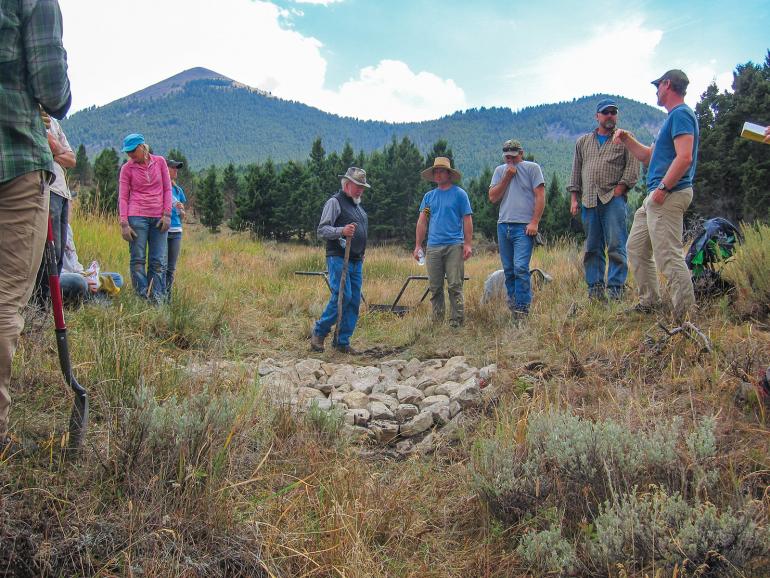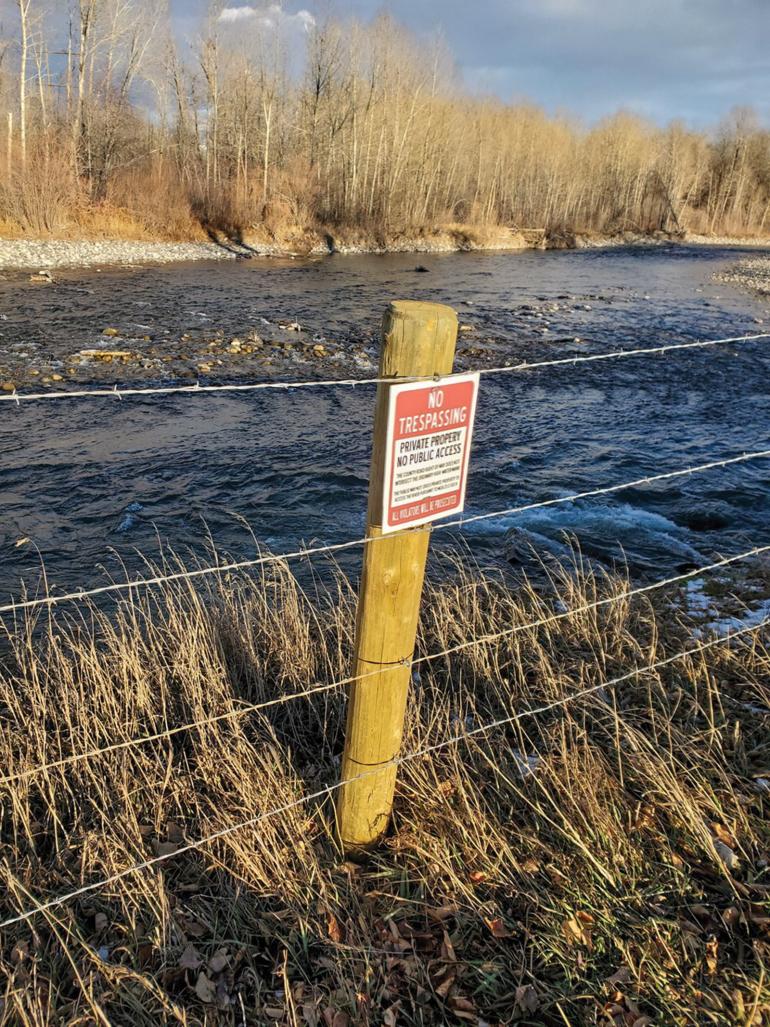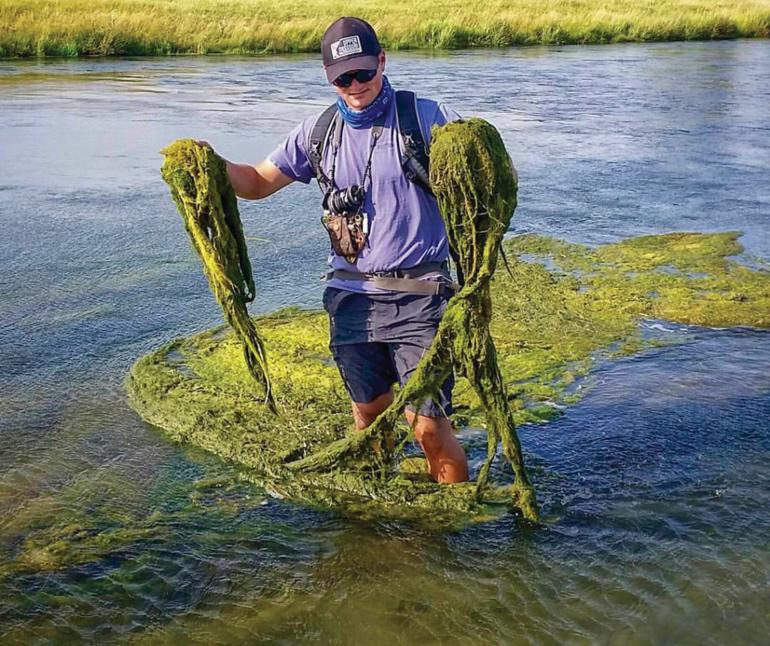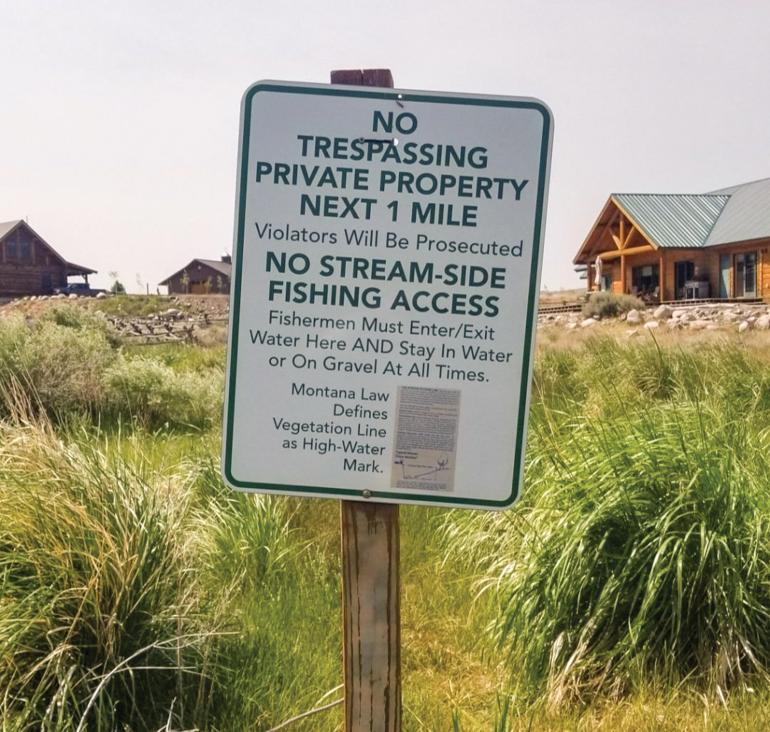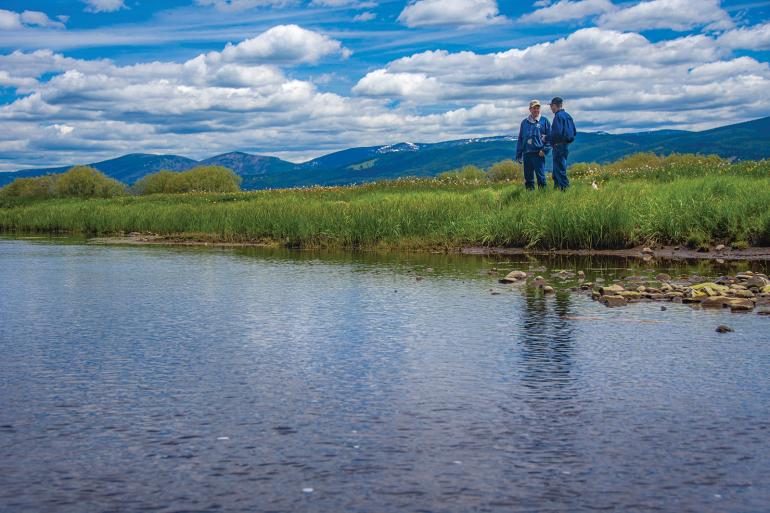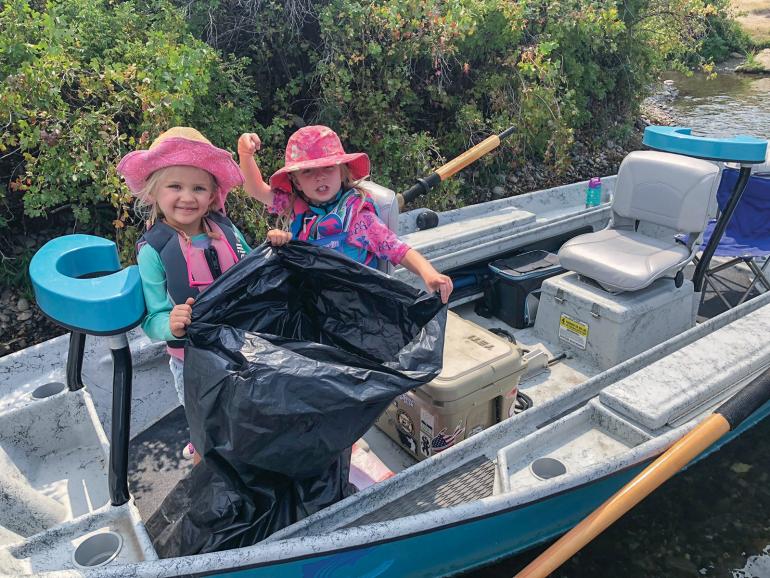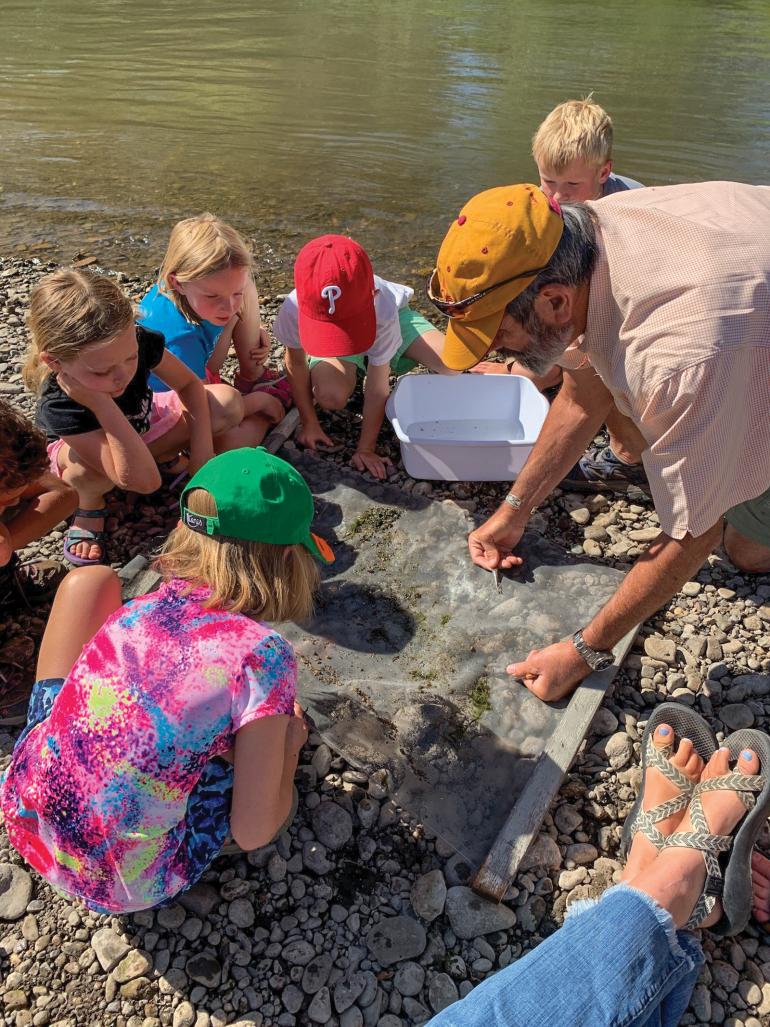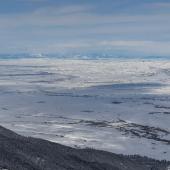River-Group Roundup
Local organizations fighting for access and clean water.
It’s easy to take access to Montana’s pristine lakes and rivers for granted. We fish and float them in the spring, swim them in the summers, and camp on their banks in the fall. But our ability to access these waters, and their overall health, is the product of a long fight—one often spearheaded by conservation groups and organizations. Here’s a roundup of a few in our region that are fighting on our behalf.
Public Land & Water Access Association
Since 1984, the mission of the Public Land & Water Access Association (PLWA) has been to maintain, restore, and perpetuate public access to Montana’s public lands and waters—a right they believe is fundamental to our state’s identity. The organization employs many means to achieve this goal, including educating the public, monitoring public-access routes, and initiating legal action when necessary.
PLWA’s accomplishments include helping to establish the Montana Stream Access Law, which enshrined in the state constitution the public’s right to access most natural waterways, as well as the Bridge Access Law and several other victories in the Montana Supreme Court. But public access is always at risk. Complaints from people who believe they’ve had their access rights violated increased 30 percent between 2022 and 2023, and without national or state agencies responding to many illegal blockages, the PLWA has redoubled their efforts.
Now, the group is focusing on the Crazy Mountain Land Exchange, which threatens to deny access to the Sweet Grass drainage. They’re also responding to other infringements on public access—fencing, illegally posted signage, and dubious trespassing accusations on the Big Hole, Loch Leven Fishing Access, and numerous other sites.
As PLWA grows, it’s important to get involved. Last summer, they held the first-ever Public Lands Festival in Bozeman, and this year they launched a course to educate volunteers about access laws and how to advocate for public land and water rights. They also launched their Access Issue Reporting System program to help people report violations (soon to be a phone app). In total, the organization resolved 16 access issues in 2023, and plans to keep up the hard work in 2024.
Anyone concerned about public-access issues in Montana can become a PLWA member. To volunteer or donate, visit plwa.org.
Upper Missouri Waterkeeper
Conflicts over water use can divide Montanans, but to the Upper Missouri Waterkeeper, water is something that should bring us together. Waterkeeper is an advocacy group that protects the public’s right to fishable, swimmable, drinkable water in the Upper Missouri River Basin—a region of 25,000 square miles that includes the main stem of the Missouri, from its source to Fort Benton, as well as its headwaters such as the Beaverhead, Big Hole, and Gallatin rivers.
The Upper Missouri Basin faces many threats—noxious algal blooms in the Gallatin from irresponsible development in Big Sky, the loss of Clean Water Act protections for headwaters and wetlands across Montana, the potential depletion of the Madison aquifer—and the Waterkeeper responds to them through government advocacy, community engagement, and strong science.
The group regularly conducts water-quality patrols to detect pollution issues, such as unpermitted land use near waterways, improper agricultural practices, and other unsanctioned pollution discharge. They also maintain a pollution hotline for citizens who notice anything suspicious.
In addition, the Waterkeeper closely monitors decisions issued by government agencies regarding water use, and informs the public when those decisions affect their waters. In February, the group won a landmark case in Broadwater County to deny approval of a major trophy-ranch subdivision that would have harmed the fishery and dewatered an area that was already pressed for moisture.
The Waterkeeper is also in court, contesting the Quarry Project (the largest new commercial development in Big Sky), and they’re prepared to fight a Montana Department of Environmental Quality proposal to eliminate Montana’s high pollution standards—a decision that would allow more nutrient-dumping into rivers.
The Waterkeeper prioritizes a cooperative approach to conservation—they recently helped the Big Hole River Foundation launch a water-quality-monitoring program, and regularly collaborate with groups like the Gallatin River Task Force. Over 1,000 people make up the Waterkeeper, and the group encourages its members, whether they want to protect Montana’s outdoor and rural heritage or allow the next generation to catch wild trout on the Big Hole, to share their passion for fishable, swimmable, drinkable water in their communities.
To learn more about challenges facing the Upper Missouri River Basin, visit uppermissouriwaterkeeper.org.
Big Hole River Foundation
In 2020, the Big Hole River Foundation (BHRF) embarked on a long-term water-quality-monitoring program—the only one of its kind on the Big Hole. The foundation, a nonprofit founded in 1988, intends to use the data as the basis for future conservation work on the 2,800-square-mile Big Hole watershed.
Threats to the watershed have increased in recent years, and include nutrient pollution, warming temperatures, and development. Studies show that its once-thriving trout populations are in decline—brown and rainbow trout numbers are at their lowest since 1969. The BHRF aims to use the best available science to address these declines, as well as anticipate and prevent those that might arise in the future.
The BHRF’s water-monitoring program collects data at ten sites, spanning 150 miles of river, each year from April through October. Recent findings have shown high nutrient levels and low levels of dissolved oxygen may be impacting fish migration and health. The organization also shares their findings with the DEQ and FWP, and posts completed data reports on their website for public use.
The BHRF’s approach also includes education, outreach, and advocacy. They’ve helped landowners construct and maintain wildlife-friendly fencing around the Big Hole Valley, and they’re supporting projects to preserve the river’s westslope cutthroat trout and arctic grayling populations. The BHRF also partners with schools to host events like Kid’s Day, which happens every spring, that educate the next generation of river users.
Moving forward, BHRF hopes to secure funding to study bug populations on the river in partnership with the Salmonfly Project. They’ll also continue collecting water samples to better understand and conserve the Big Hole River and its tributaries.
To learn more about BHRF’s water-monitoring program, visit bhrf.org.
Beaverhead Watershed Committee
Faced alone, the problems of conservation and land use can be overwhelming. But to address the problems facing the Beaverhead watershed, a region that includes the Beaverhead River and its tributaries from Twin Bridges to the Clark Canyon Reservoir, a diverse group of people have come together to improve and repair its environment.
This coalition, the Beaverhead Watershed Committee (BWC), represents local agriculture, business, outfitters and guides, county commissioners, and the Beaverhead conservation district, and they rely on collaboration to balance potentially competing interests. Over the past 23 years, the BWC has done everything from fighting noxious weeds in the Beaverhead River and Dyce Creek to enhancing wild-fish habitat on Poindexter Slough. They’re currently working with the Bureau of Land Management and other local partners on the restoration of sagebrush ecosystems, wet meadows, and small streams in their region.
In 2017, the BWC expanded south into the Red Rock watershed. After drafting a watershed restoration plan for the area, they identified projects on impaired waters, including the construction of a larger wetland in Stone Creek, which they plan to move forward with in the coming years.
Along with these physical projects, the BWC fosters dialogue around water use and conservation issues in the region. Each month, they send out a newsletter discussing the questions and challenges facing the Beaverhead Watershed, and they encourage people to reach out with concerns for the area.
To learn more about how the BWC stewards the region, visit beaverheadwatershed.org.
Madison-Gallatin Trout Unlimited
Southwest Montana is renowned as a fishing mecca, where rivers like the Madison, Gallatin, and Missouri can contain over a thousand trout per mile. But without the Madison-Gallatin Trout Unlimited Chapter (MGTU), things might be different.
Since 1968, their mission has been to “conserve, protect, and restore southwest Montana’s coldwater fisheries and their watersheds.” With wild-trout populations currently under threat from increased development, pollution, noxious algal blooms, and warming temperatures, MGTU’s work is as essential as ever. Their chapter, which boasts over 900 members, organizes conservation projects, educational initiatives, and community events with the goal of getting everyone—not just avid anglers—involved in their efforts.
MGTU organizes river clean-ups and weed-pulls every spring and summer on the Gallatin and Madison rivers, and their ongoing restoration projects on Mill, Brackett, Dry, Leverich, and Sixteen Mile creeks aim to increase watershed resilience and protect and improve wild- and native-fish habitat. The group also hosts a monthly general meeting (open to the public) to promote connection and conversation, and an annual TroutFest Banquet and Fundraiser to raise money for conservation efforts.
Other programs include their Kids Conservation Fly-Fishing Camps and Fly-Tying Clinics, and a Service Partnership Program that assists local active-duty servicemen and women, reservists, veterans, and first responders through fly-fishing and fly-tying experiences.
To learn more about protecting our cold-water fisheries, visit mgtu.org.


